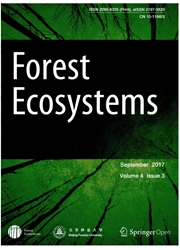

 中文摘要:
中文摘要:
日本落叶松(Larix leptolepis Gordon ) 的一个高效率的体细胞胚开始协议在我们的调查被建立了。Calli 从 L 的女锥的不成熟的 zygotic 胚胎被导致。leptolepis 然后 subcultured 定期在上到修改 Gupta 和 Durzan (DCR ) 为 5 年的基础培养基。Embryogenic 纸巾在体细胞胚开发期间看了不同词法变化他们什么时候被转移到在一件中等缺乏骆驼毛的织物与形态学相比与 abscisic 酸(骆驼毛的织物) 补充的成熟媒介。组织学的观察显示多胚在早胚形成期间是一个典型特征,在以后的阶段的体细胞胚显示出正常 histodifferentiation。另外,组织化学的分析表明丰富的淀粉小粒和蛋白质在成熟胚胎积累了,显示他们起了在从没有荷尔蒙的萌芽媒介上的体细胞胚的正常小植物的发展和新生的重要作用
 英文摘要:
英文摘要:
A high-efficiency somatic embryogenesis protocol of Japanese larch (Larix leptolepis Gordon) has been established in our investigation. Calli were induced from immature zygotic embryos of female cones ofL. leptolepis and then subcultured regularly on to a modified Gupta and Durzan (DCR) basal medium for 5 years. Embryogenic tissues showed distinct morphological changes dur- ing somatic embryo development when they were transferred to a maturation medium supplemented with abscisic acid (ABA) com- pared with the morphology in a medium lacking ABA. Histological observations indicated that polyembryony was a characteristic feature during early embryogeny and somatic embryos at later stages showed normal histodifferentiation. In addition, histochemical analysis revealed that abundant starch granules and proteins accumulated in mature embryos, indicating that they played important roles in the development and regeneration of normal plantlets from somatic embryos on hormone-free germination media
 同期刊论文项目
同期刊论文项目
 同项目期刊论文
同项目期刊论文
 期刊信息
期刊信息
